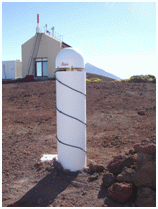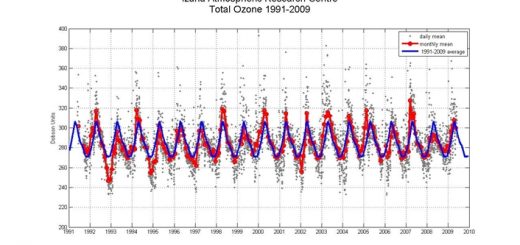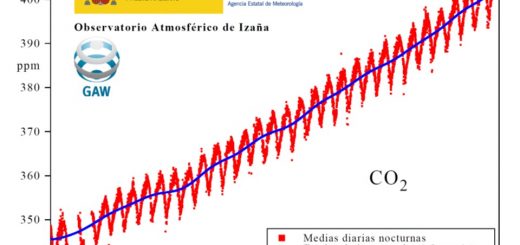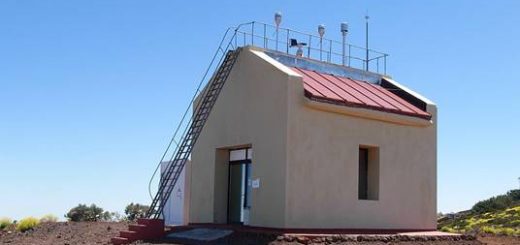Radiation and Water Vapour
RADIATION AND COLUMN AEROSOLS AND WATER VAPOUR MONITORING PROGRAM AT IZAÑA ATMOSPHERIC RESEARCH CENTER
Visitors for instrumental campaigns and workshops
General Objectives
Radiation:
Study of the radiative budget of the Earth-Atmosphere system.
Water vapor:
High precision and high temporal resolution total column and vertical profile water vapor long-term monitoring.
Column aerosols:
Aerosols total column optical propierties characterization and analysis.
Specific Objectives
Radiation:
1. Evaluation of the radiative forcing by aerosols using radiative transference models (UVSpec, GOA-UVA…).
2. Detailed study of radiative models as tools to calibrate radiation instruments.
3. Homogenization of long-term global radiation series at Izaña.
4. Radiation instruments calibration in optical laboratory: spectral irradiance response and angular response.
5. Cosine correction for radiation instruments.
Water vapor:
1. Improve Zenital Total Delay (ZTD) data from the GPS-GLONASS measurements using the standard equations for the Izaña atmosphere in the Bernese software.
2. Column water vapor GPS-GLONASS validation against FTIR. Validation of satellite-based water vapor.
3. Water vapor column characterization for typical meteorological situations at both synoptic and local scales.
Column aerosols:
1. Evaluation of the radiative forcing by aerosols using radiative transference models (UVSpec, GOA-UVA…).
2. Homogenization of historical Aerosol Optical Depth (AOD) series at Izaña and Santa Cruz.
3. Optical properties characterization at Izaña, Santa Cruz and Tamanrasset (Algeria) stations.
4. Sun photometer Masters calibration.
5. Laboratory radiance calibratrion system
Measurements
IZAÑA
The radiation instruments are located on the roof of the Observation tower at the Izaña Observatory (IZO):
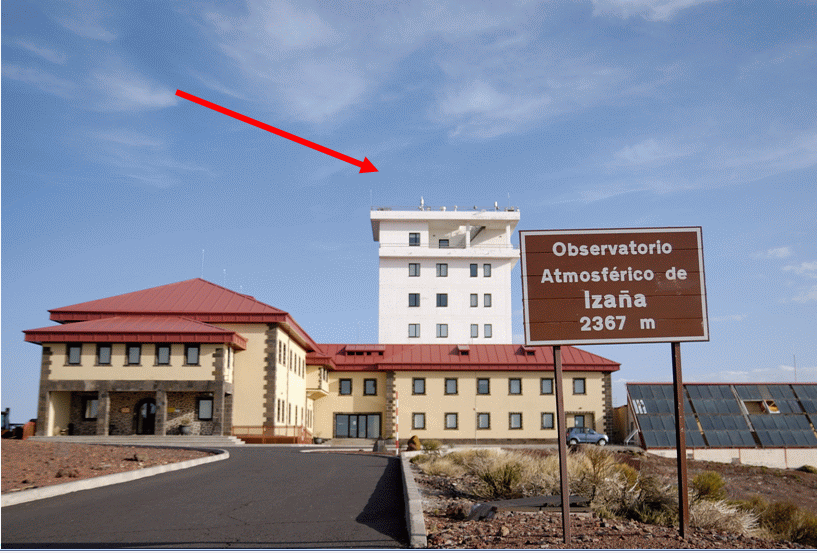
The white observation tower behind the main building.
The receptor GPS-GLONASS is placed at ground in front of main building.
The radiation equipment consists on radiometers (pyranometers measuring global and diffuse radiation), sunphotometers (CIMEL and Precision Filter Radiometer (PFR)) and a Multi-filter Rotating Shadowband Radiometer (MFRSR)). The MFRSR measures simultaneously global, diffuse and normal direct radiation in a broadband channel and in six narrowband channels within infrared and visible regions. The sunphotometers measure normal direct radiation and sky radiation within infrared and visible regions.
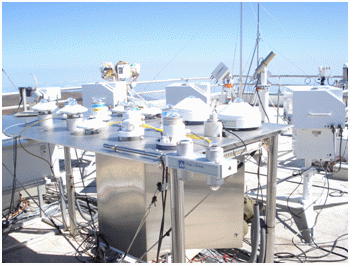
Radiometers table at IZO’ Observation Tower
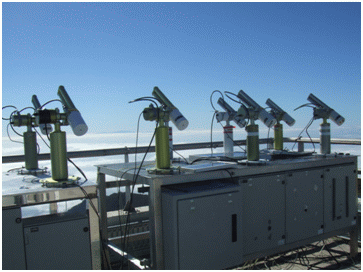
Cimel masters calibration facility
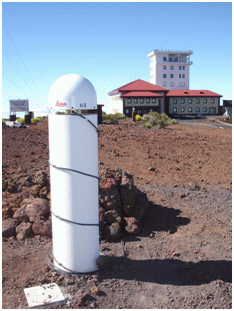
GPS-GLONASS with the Observatory to the North

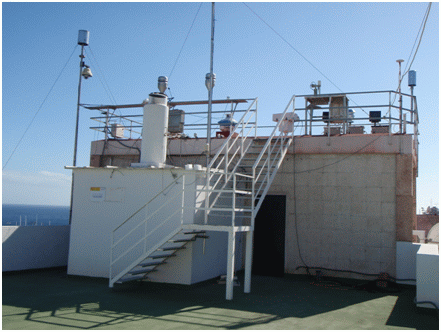
View of Santa Cruz Observatory (SCO). It is located on the roof of the IARC’s Headquarters
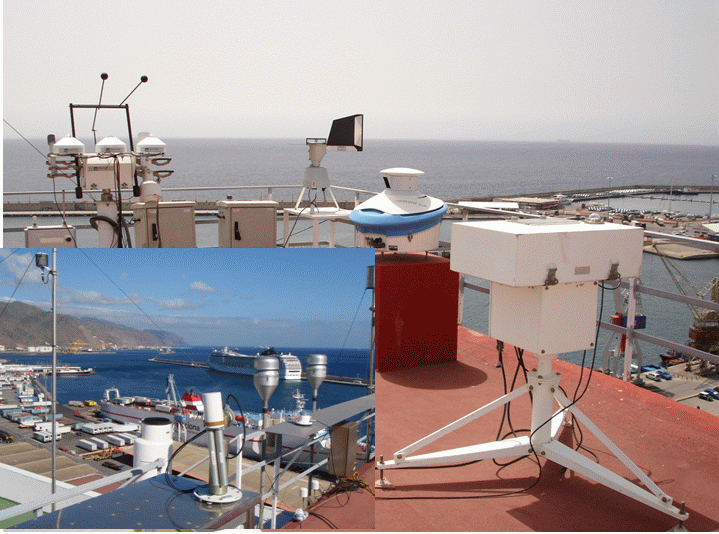
Instrumentation in SCO. Global and diffuse pyranometers, as well as a pyrheliometer. The diffuse pyranometers appear shadowed with balls and all of them (pyranometers and pyrheliometer) are mounted on a sun-tracker. The CIMEL sunphotomer is identified in the left corner, and the single Brewer#033 spectroradiometer is in the right corner.
| Parameter | Instrument picture |
| Pyranometer CM-21 Kipp&Zonen The CMP 21 pyranometer is designed for measuring the irradiance (radiant flux, Watt/m²) on a plane surface, which results from the direct solar radiation and from the diffuse radiation incident from the hemisphere above. Spectral range: 310 to 2800 nm |
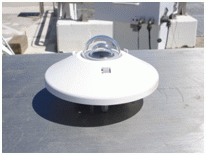 |
| SONA: Automatic Cloudiness Observation System A new 640×480 pixel resolution CCD 2-Pi sky camera (SONA: Sistema de Observación Automático de Nubes; Automatic Cloudiness Observation System) has been developed at the Izaña Observatory by the R+D Sieltec Company in collaboration with the IARC. |
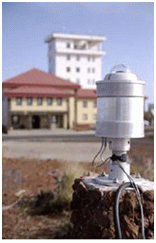 |
| UV-Radiometer UV-S-A-T (Kipp&Zonen) The UVS-A-T has a broad spectral response optimised for precise measurements of atmospheric UV-A irradiance. Spectral range: 315 to 400 nm |
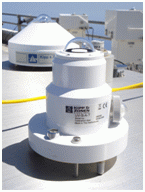 |
| Pyrgeometer CG-4 Kipp&Zonen Long-wave downward radiation Spectral range: 4500 to 42000 nm |
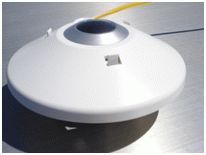 |
| Yankee Ultraviolet Biometer (YES) UV-B Global Spectral range: 280 to 400 nm |
 |
| Spectrometer BREWER Mk-III (Kipp & Zonen) The BREWER Spectrophotometer consists of a weatherproof spectrophotometer, azimuth tracker and stand. It provides near simultaneous observations of the total ozone column, SO2, and UV spectra. Wavelength range 286.5 to 363 nm Resolution 0.6 nm |
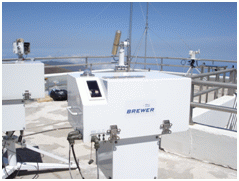 |
| Precision Filter Radiometer (PFR)
The PFR accurately measures direct solar radiation transmitted in 4 narrow spectral bands center wavelengths at 862, 500 , 412 and 368 nm, respectively, and 5 nm FWHM bandwidth. |
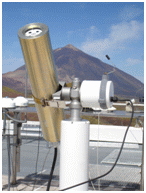 |
| RS92+GPS and ECC-A6 ozonesondes at Santa Cruz de Tenerife Station. They are launched once a week, normally on Wednesdays.
RS92+GPS radiosondes launched twice a day (00 and 12 GMT) at Güimar automatic radiosonde station (WMO station #60018). |
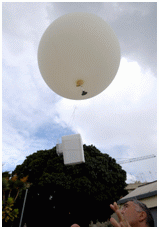 |
| Present Weather: Fumosens VI optic device for real time detection of fog, rain, snow, hail… | 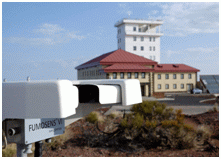 |
| CIMEL sunphotometer The Cimel sunphotometer is a multichannel, automatic sun-and-sky scanning radiometer that measures the direct solar irradiance and sky radiance at the Earth’s surface. Spectral range: 340, 380, 440, 500, 675, 870, 936, 1020, (and 1640) nm. At Izaña there are about 6 Cimel master working simultaneously |
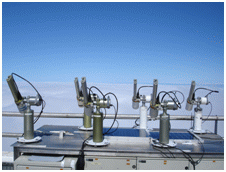 |
| Tracker Kipp&Zonen 2AP: 2 Pyranometer CM-21 (Short-wave downward (Global) and Diffuse Radiation) 1 Pyrgeometer CG-4 (Long-wave downward radiation ) 1 Pyrheliometers (Direct Radiation) |
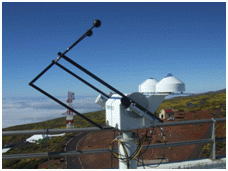 |
| Net Radiometer (Kipp&Zonen) Net radiation Spectral range: 300 to 2800 nm Solar radiation is measured by two pyranometers, one for downward radiation and a second one facing downward for upward radiation. The albedo is determined as the ratio of downward and upward radiation. |
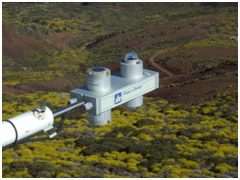 |
| Pyrheliometer CH – 1 (Kipp&Zonen) Direct Radiation Spectral range: 200 – 4000 nm |
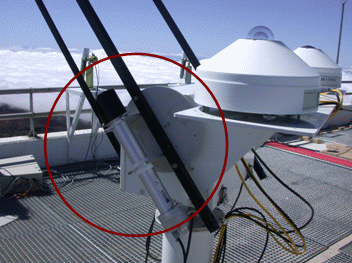 |
| Multifilter Rotating Shadowband Radiometer (MFRSR). (Yankee Environmental Systems). Simultaneously measurements of global, diffuse and direct radiation in one broadband channel and 6 narrowband channels within the infrared and visible ranges. Spectral range: 413-495-613-671-868-941nm (FWMH about 10-12nm) |
 |
| GPS-GLONASS antenna and receptor (Leica, GRX1200GGPro) Measurements of Zenith Total Delay Precipitable water in the atmospheric column in near real time (15-minute values every hour) computed with Bernese software by the Instituto Geográfico Nacional. |
|
DATABASES
Radiation and water vapor data is submitted to the following international networks:
BSRN (BASELINE SURFACE RADIATION NETWORK)
AERONET (AEROSOL ROBOTIC NETWORK)
PHOTONS (PHOtométrie pour le Traitement Opérationnel de Normalisation Satellitaire)
WMO World Radiation Data Center (previous free registration needed)
Izaña station ; WMO#60010
Santa Cruz de Tenerife; WMO#60020
EUREF (IZAN station)
E-GVAP (the EUMETNET GPS water vapour Programme)
Research
Water vapor
A detailed comparison of total column water vapor content over Izaña obtained with different techniques has been finished in April 2009. The results indicate that Global Navigation Satellite Systems (GNSS) technique using a GPS-GLONASS receptor is a high quality method to obtain this essential climate variable (ECV, Precipitable Water) in near-real time under all type of weather conditions and during the nighttime.
The comparison between GNSS and the FTIR spectrometer (Fourier Transform Infrared Spectrometer) is shown hereafter. The FTIR is considered now the most precise technique. A high correlation is found with quite close water vapor content for both techniques.
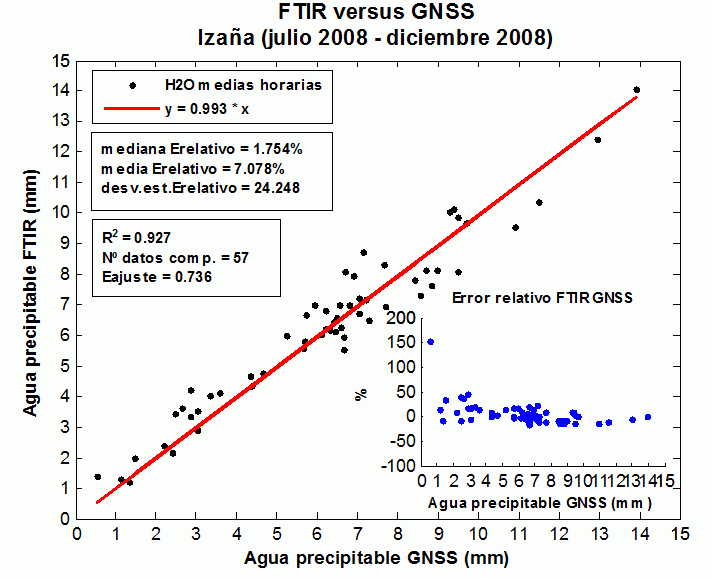
H2O FTIR (Y-axis) versus H2O GNSS (X-axis).
Under very dry atmospheric conditions (below 3mm of precipitable water) the GNSS technique tends to underestimate the water vapour content, and below 1mm no confident values are obtained (sometimes negative values).
Radiation

Scientists
Mr. Pedro Miguel Romero Campos (Lead)
Ms. Carmen Guirado Fuentes (PhD student)
Dr. Rosa Delia García Cabrera
Dr. Emilio Cuevas-Agulló (link to personal page)
Dr. Victoria Cachorro Revilla (GOA-UVA)
Dr. Alberto Berjón Arroyo (GOA-UVA and LOA-Lille1)
Dr. Carlos Toledano Olmeda (GOA-UVA)
Visitors for instrumental campaigns and workshops (since 2003)
| Name | Institution | Period |
| More than 25 scientists | GOA-UVA, AERONET, PHOTONS, AEROCAN, Polar-AOD (ISAC-CNR), AWI, NIPR,NOAA, NILU and IARC-AEMET | 6-20 October 2008 |
| Victoria Cachorro, Alberto Berjón | RIMA (Valladolid University) | Several campaigns since 2007 |
| Luc Barel and Bahy Damiri | PHOTONS (Lille University-CNRS) | Several campaigns since 2006 |
Publications based on radiation and column water vapor data at Izaña
Schneider, M., P.M. Romero, F.Hase, T. Blumenstock, E. Cuevas, and R. Ramos, Quality assessment of Izaña´s upper-air water vapour measurement techniques: FTIR, Cimel, MFRSR, GPS, and Vaisala RS92. Submitted to Atmos. Meas. Tech., May 2009.
Pedro Miguel Romero Campos, Emilio Cuevas Agulló, Ramón Ramos López, Marcelino Valdés Pérez de Vargas y Matthias Schneider. Programa de vapor de agua en columna del Centro de Investigación Atmosférica de Izaña: Análisis e Intercomparación de diferentes Técnicas de Medida. Series de Notas Técnicas digitales del Centro de Investigación Atmosférica de Izaña. Nota Técnica digital Nº 1. Abril 2009.
Gil, M., J.F. Lopez-Herreros, S. Chueca, O. Serrano, S. Alonso, E. Cuevas, P.M. Romero, M. Navarro, C. Córdoba, A. Redondas, M. Schneider, I. Kramer and T. Blumenstock, The TROMPETA Project: Aerosols-Radiation-Ozone interaction in the Subtropics, V Asamblea Hispano Portuguesa de Geodesia y Geofísica, Universidad de Sevilla, 30 de enero a 3 de febrero, 2006.
Cachorro, V. E., P. M. Romero, C. Toledano, E. Cuevas, and A. M. de Frutos, The fictitious diurnal cycle of aerosol optical depth: A new approach for “in situ” calibration and correction of AOD data series, Geophys. Res. Lett., 31, L12106, doi: 10.1029/2004GL019651, 2004.
Romero, P. M., y E. Cuevas, Variación diurna del espesor óptico de aerosoles: ¿“ficción” o realidad ?, 3ª Asamblea Hispano-Portuguesa de Geodesia y Geofísica, Valencia, 4-8 febrero, 2002.
Romero, P.M., Mª C. Romero, y E. Cuevas, Espesor óptico de aerosoles a partir de medidas directas al sol y de medidas de irradiancia global y difusa, Comparación, 3ª Asamblea Hispano-Portuguesa de Geodesia y Geofísica, Valencia, 4-8 febrero, 2002.
Romero, P.M., y E. Cuevas, Comparación entre el espesor óptico de aerosoles medido en el Observatorio de Izaña y el índice de aerosoles determinado por el TOMS, 3ª Asamblea Hispano-Portuguesa de Geodesia y Geofísica, Valencia, 4-8 febrero, 2002.

